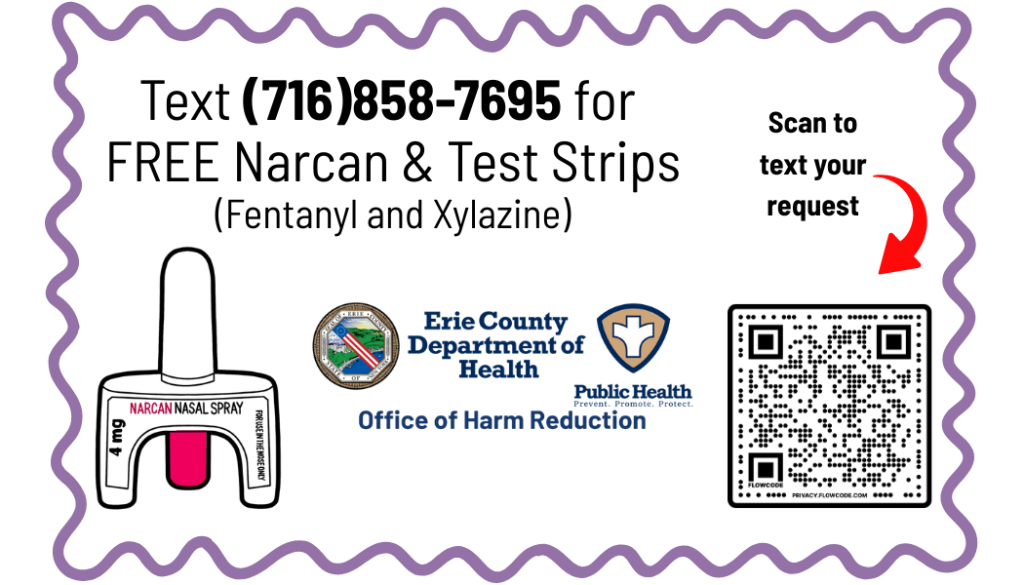Hotlines
9-8-8 Suicide and Crisis Lifeline - support and referrals for people facing mental health struggles, emotional distress, alcohol or drug use concerns. Call or text 988, or chat online.
24-Hour Crisis Hotline: (716) 834-3131
Never Use Alone: (877) 696-1996
Community Outreach Sites
The Erie County Department of Health (ECDOH) coordinates outreach at locations throughout Erie County. At these sites, ECDOH staff and other community partners provide free services, supplies and support for health promotion and harm reduction. These events are intended to make ECDOH programs and services more accessible to county residents.
Ending Stigma
Erie County Anti-Stigma Coalition
Words Matter - terms to use, terms to avoid, and why.
Bridge Erie to Harm Reduction
Bridge Erie to Harm Reduction is a new learning collaborative designed to meet the evolving challenges of the drug and opioid epidemics. Replacing the Erie County Overdose Prevention Task Force after nearly a decade of service, this initiative represents a renewed commitment to saving lives and supporting communities.

Naloxone/Narcan
Naloxone is a lifesaving, first-aid medication used to reverse an opioid overdose. It works by kicking the opioids off their receptors and blocking the effects of opioids in the body. Naloxone is a do no harm drug meaning it won’t have any impact on someone who does not have opioids in their system, because of this we encourage everyone to keep it with them at all times.
- How to get FREE Narcan/naloxone
- How to Use Narcan
- Free Narcan trainings
- Flyer: Narcan Saves Lives - Text for Narcan
- How Do I Get Naloxone at a Pharmacy
- Availability of Naloxone in Pharmacies and the Naloxone Co-payment Assistance Program (N-CAP)
- NY State Community Naloxone Usage Form
- NY State Public Safety Naloxone Quality Improvement Usage Report
Substance Information
Commonly Used Substances
Harm Reduction For Benzodiazepines
HAMS: Harm Reduction for Alcohol
Adulterants/Contaminants
Adulterants are substances that are added to a product (like a drug or food) that don't belong there. They are considered contaminants that can cause additional risk.
Harm Reduction Principles and Supplies
Principles of Harm Reduction
Related Pages